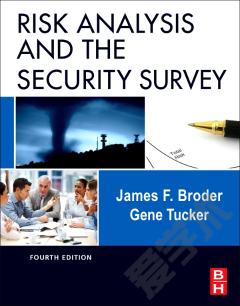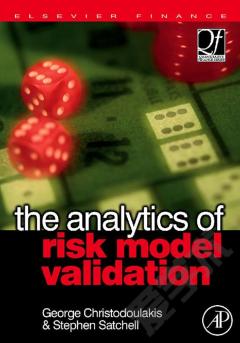LNG Risk Based Safety —— Modeling and Consequence Analysis
----- 液化天然气以风险为基础的安全管理:建模与后果分析
Preface. 1 LNG Properties and Overview of Hazards. 1.1 LNG Properties. 1.2 Hazards of LNG with Respect to Public Risk. 1.3 Risk Analysis Requires Adequate Modeling. 1.4 Flammability. 1.5 Regulations in Siting Onshore LNG Import Terminals. 1.6 Regulation for Siting Offshore LNG Import Terminals. 1.7 Controversial Claims of LNG Opponents. 2 LNG Incidents and Marine History. 2.1 LNG Ship Design History. 2.2 Designs and Issues First Commercial LNG Ships. 2.3 LNG Trade History. 2.4 LNG Accident History. 2.5 Summary of LNG History and Relevant Technical Developments. 3 Current LNG Carriers. 3.1 Design Requirements. 3.2 Membrane Tanks. 3.3 Moss Spheres. 4 Risk Analysis and Risk Reduction. 4.1 Background. 4.2 Risk Analysis Process. 4.3 Frequency: Data Sources and Analysis. 4.4 Frequency: Predictive Methods. 4.5 Consequence Modeling. 4.6 Ignition Probability. 4.7 Risk Results. 4.8 Special Issues Terrorism. 4.9 Risk Reduction and Mitigation Measures for LNG. 5 LNG Discharge on Water. 5.1 Type 1 Above Water Breaches at Sea. 5.2 Type 2 At Waterline Breaches at Sea. 5.3 Type 3 Below Waterline Breaches at Sea. 5.4 Discharges from Ship's Pipework. 5.5 Cascading Failures at Sea. 5.6 Initial Discharge Rate. 5.7 Time-Dependent Discharge (Blowdown). 5.8 Vacuum Breaking and Glug-Glug Effects. 6 Risk Analysis for Onshore Terminals and Transport. 6.1 Typical Basis for LNG Receiving Terminal. 6.2 Features of LNG Receiving Terminals. 6.3 Standards for Receiving Terminal Design. 6.4 U.S. Guidelines and Regulations for Receiving Terminals. 6.5 European Regulations for LNG Receiving Terminals. 6.6 Empirical Formula for Required Land Area of Terminal. 6.7 Leak in Loading Arm or in Storage Tank. 6.8 Rollover. 6.9 LNG Land Transport Risk. 6.10 Offshore LNG Terminals. 7 LNG Pool Modeling. 7.1 Flashing and Droplet Evaporation in Jet Flow. 7.2 Pool Spread and Evaporation Modeling. 7.3 Rapid Phase Transition Explosions. 7.4 Aerosol Drop Size. 7.5 Heat Balance Terms to LNG Pool. 7.6 Nomenclature. 8 Vapor Cloud Dispersion Modeling. 8.1 Atmospheric Transport Processes. 8.2 Model Types. 8.3 LNG Dispersion Test Series. 8.4 Factors Affecting Plume Length. 8.5 Effect of Wind, Currents, and Waves on LNG Plume. 8.6 Comparison of Dispersion Model Predictions. 8.7 Descriptions of Dispersion Test Series. 8.8 Vapor Intrusion Indoors. 8.9 Theoretical Basis for Suppression of Turbulence. 9 LNG Pool Fire Modeling. 9.1 Types of Fires from LNG Facilities. 9.2 The Challenge for Pool Fire Modeling. 9.3 Pool Fire Characteristics. 9.4 Summary of LNG Fire Experiments. 9.5 Burning Rate Data and Correlations From Fire Tests. 9.6 Point Source Fire Model. 9.7 Solid Flame Models: Flame Length Correlations. 9.8 Flame Tilt Correlations. 9.9 Flame Drag Near Pools. 9.10 Sep Correlations and Smoke Shielding. 9.11 Atmospheric Transmissivity. 9.12 Trench Fires. 9.13 View Factors. 9.14 CFD Modeling. 9.15 Comparison of Model Predictions. 9.16 Fire Engulfment of LNG Carrier. 10 Other LNG Hazards. 10.1 Fire and Explosion Scenarios. 10.2 Jet Fires. 10.3 Flash Fires. 10.4 BLEVEs, Fireballs. 10.5 LNG Vapor Cloud Explosions. 10.6 Asphyxiation and Cryogenic Hazard from LNG Spills. 11 Fire Effects. 11.1 Fire Radiation Effects on Individuals. 11.2 Effects of Thermal Radiation on Property. 12 Research Needs. 12.1 Uncertainties. 12.2 Recommendations of GAO Survey. 12.3 LNG Model Evaluation Protocols (MEPs). 12.4 Special Topics. 12.5 Conclusions. References. Index.
{{comment.content}}








 京公网安备 11010802027623号
京公网安备 11010802027623号